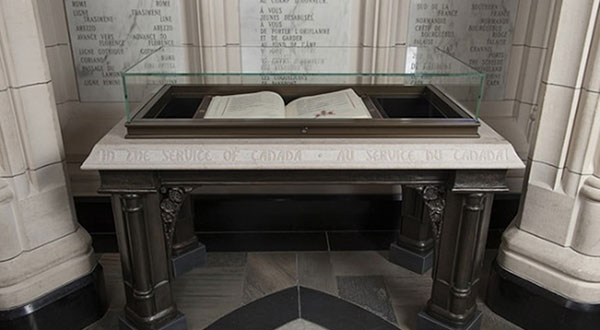Canadian soldiers, sailors, airmen and airwomen have played a difficult and essential role on the world stage. By remembering their service and their sacrifice, we recognize the tradition of freedom these individuals fought to preserve. They were ordinary Canadians who made extraordinary sacrifices. They believed that their actions in the present would make a significant difference for the future, but it is up to us to ensure that their dream of peace is realized. By remembering all who have served, we recognize the willingly-endured hardships and fears they took on so that we could live in peace.
It is vital that Veterans’ service to our nation be adequately recognized. The Commemoration Strategic Plan serves as our blueprint for future programming and invites Canadians to honour and learn about our long military history, while ensuring that Veterans are valued and recognized for their service to Canada. Building on our past work, we will ensure that our Veterans’ contributions to Canada and our public life are acknowledged and that Canadians understand what it means to be a Veteran – in particular, those retired members of the CAF who have not previously felt that they are Veterans. The plan includes four goals, with supporting objectives, and articulates how we will move forward in the coming years.
The Commemoration Strategic Plan delivers with four goals:
Goal 1. Help Canadians understand how those who served our country have helped advance peace and security around the world. We honour Canada’s military members’ service to Canada. Their service will never be forgotten and will remain relevant to our society. We will help Canadians learn about our Veterans, the diverse roles they’ve fulfilled and the experiences they’ve had in keeping Canada safe. Veterans and their families will feel recognized, no matter when or where they served.
Goal 2. Inspire Canadians to actively celebrate and recognize the service and sacrifices of all who have served our country in uniform. We will lead military commemoration in the Government of Canada with innovative programming and inspirational events. Our federal and community partners will look to VAC for leadership and expertise. We will support communities across Canada as they organize commemorative events as well as restore and build cenotaphs and other memorials. We will also engage Canada’s diverse cultural communities, including those who are from countries where the CAF has had an impact. We will maintain a strong ongoing focus on engaging youth in remembrance.
Goal 3. Preserve, maintain and enhance Government of Canada memorials, including the Books of Remembrance and Veteran grave markers, in a sustainable and dignified way. Our memorials, sites and cemeteries will be cared for and presented with the greatest integrity so that future generations can also appreciate them for years to come. Many of these resources have heritage value due to their historical or cultural significance. In partnership with the Commonwealth War Graves Commission, we maintain more than 110,000 war dead graves found in more than 70 countries as well as almost 210,000 Veteran grave markers in Canada and overseas.
Goal 4. Align Departmental resources to better serve Canadians. We will work with our internal and external government partners and stakeholders to deliver our mandate. We will ensure that our employees have the right training, tools and resources to do their job and feel empowered to deliver bold and innovative remembrance and recognition programming.
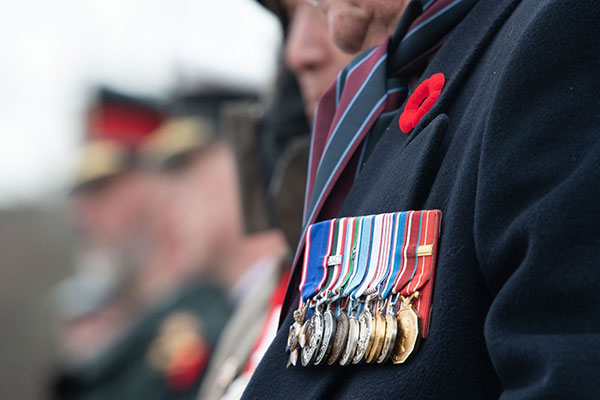
Goal 1: Help Canadians understand how those who served our country have helped advance peace and security around the world.
We will highlight the contributions of Canada’s military in defending peace, ensuring security and supporting humanitarian efforts around the world and the relevance of these contributions to today’s society. Canadian Veterans and their families will feel recognized, no matter when or where they served. Without the right data to measure Canadians’ level of participation in remembrance activities, their attitudes toward those who served in Canada's military and their level of support for VAC’s work related to remembrance, we cannot properly develop commemorative programming and determine its effectiveness. We will continue to evaluate existing studies of Canadians and educators, and consult partners and stakeholders, to inform the development of our commemorative programming.
Objective 1.1 – Public opinion research and evaluations. Conduct public opinion research and other evaluations to better understand the needs and views of Veterans and Canadians to meet the goals of our commemorative programing that honours the service, sacrifice and contributions of all who have served Canada in uniform, including underrepresented groups, whether at home or abroad. We will:
- Continue to conduct our Attitudes Towards Remembrance and Veterans’ Week Survey to measure Canadians’ level of participation in remembrance activities, their attitudes toward those who served in Canada's military and their level of support for VAC’s work related to remembrance. The results of these surveys support the development and improvement of remembrance activities and initiatives, determine their effectiveness in supporting desired outcomes and report on performance to Canadians.
- Conduct and analyze online voluntary evaluations by educators who ordered Veterans’ Week learning resources. The results are used to improve and enhance our Veterans’ Week learning resources to meet the needs and expectations of educators and students.
Objective 1.2 – Consultation and engagement. Consult with our stakeholders, partners and the public on a range of issues to inform our remembrance programming. We will:
- Consult with employees across the Department to identify innovative and engaging programming opportunities.
- Consult with stakeholder groups to assess the existing commemorative content provided in the Remembrance section of our website, in our social media posts and in print format to identify gaps in recognizing the diversity of Veteran service. This includes the great conflicts of the 20th century, the Cold War, peacekeeping and peace support, in-Canada service, domestic operations and the variety of roles Veterans have fulfilled.
- Engage with provincial and territorial teacher education programs to explore opportunities to instill an interest in, and capacity to, integrate remembrance activities into new educator teaching activities. VAC will continue to have a presence at pre-service teacher conferences.
- Identify opportunities to strengthen existing partnerships and develop relationships with a wide range of Veterans organizations, Indigenous organizations, social and cultural groups, youth organizations, schools and multicultural and diverse communities (including new Canadians) to help inform VAC’s commemorative programming approach.
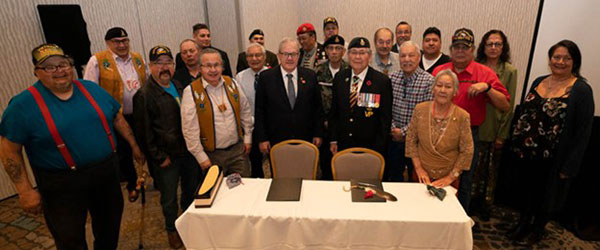
- Develop a youth engagement strategy and examine opportunities to increase engagement, strengthen consultation and involve youth in planning commemorative events, learning resources and interactive digital experiences.
Our Commemoration results soughtFootnote 17
| Departmental results | Departmental result indicators | Target |
|---|---|---|
|
Veterans and those who died in service are honoured. |
% of Veterans Affairs Canada clients who are satisfied with the way VAC's commemorative initiatives honour Veterans and those who died in service. |
80 % |
|
Veterans and those who died in service are honoured. |
# of page views of Canadian Virtual War Memorial. |
2,000,000 |
|
Veterans and those who died in service are honoured. |
% of visitors to Vimy and Beaumont-Hamel overseas memorials who report they have a better understanding of the sacrifice and contribution of those who served. |
95% |
|
Canadians remember and appreciate Veterans and those who died in service. |
% of Canadians who indicate they make an effort to appreciate Veterans and those who died in service. |
75% |
|
Canadians remember and appreciate Veterans and those who died in service. |
# of Canadians who participated in community engagement activities financially supported by VAC. |
200,000 |
Objective 1.3 – Education and learning products. Design learning materials to encourage youth and Canadians to learn about the importance of remembrance and the roles played by Canadians during times of war, military conflict and peace. We will:
- Provide innovative and accessible learning materials that will help educators teach youth about the role of Canada’s military in the world and their achievements and sacrifices.
- Continue to design and test new learning products such as short video clips, live-streamed commemorative events, and interactive digital experiences (virtual memorial or battlefield tours).
- Renew our collection of first-person Veteran stories on modern Veterans and underrepresented groups.
- Ensure that achievements of modern Veterans, women, Indigenous and 2SLGBTQI+ Veterans from all conflicts and missions are commemorated and recognized.
- Develop tools and resources and proactively reach out to assist Veteran organizations, community groups and schools as they plan and conduct commemoration or recognition ceremonies or activities.
- Work with the National Capital Commission and Canadian Heritage to enhance interpretation at the National War Memorial at Confederation Square National Historic Site of Canada.
- Develop, test and release the “CAF around the World” multimedia learning resource.
Objective 1.4 – Digitization and the web. Expand the use of digital technology to improve the Remembrance section of our website, our collection of first-person Veteran stories and learning materials to enhance accessibility and the online experience and engagement of users. This includes:
- Updating and redesigning the Remembrance section on the Department's website to improve the format to have a positive impact and appeal to potential users. We will ensure intuitive navigation, and employ plain language to feature our historical information and stories of Veterans and the fallen. This will be supported by usability research and testing. We launched the new Remembrance webpage information architecture and revised the most requested content in early 2020. The intent is to update the Remembrance section of our website once every three years so it remains fresh to our users.
- Continuing to adapt to emerging social media tools and trends, especially those that engage youth. Working with Communications Division, we will use digital and social media analytics to guide social media strategies and plans to engage more of our target audiences in virtual commemoration, recognition and learning activities.
- Invest in the infrastructure and redesign architecture that supports the user experience of our Canadian Virtual War Memorial, the National Inventory of Military Memorials and the VAC Events Calendar to expand functionality, continue to increase content and better meet user needs.
- Digitizing the Commemorative Partnerships Program by creating an online application process to provide a better user experience, reduce processing time and provide applicants with faster access to funding decisions.
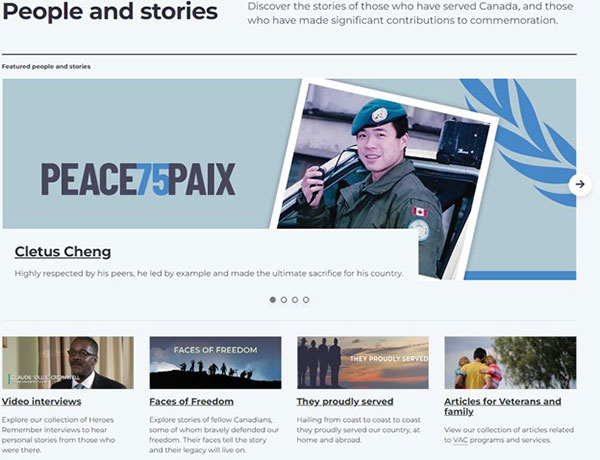
Goal 2. Inspire Canadians to actively celebrate and recognize the service and sacrifices of all who have served our country in uniform.
We will lead military commemoration in the Government of Canada and continue to support stakeholders, partners and communities across Canada to bring the remembrance experience to Canadians where they live. We will maintain a strong ongoing focus on encouraging youth involvement and leadership in remembrance. By recognizing the contributions, achievements and sacrifices of all Veterans across our history, we will strengthen how Canadians connect with our country’s military heritage.
Objective 2.1 – Commemorative Programming, Activities and Events. Support and deliver commemorative programming, activities and events, focusing on service and sacrifice around the world and recognizing important military milestones across Canadian history in order to honour the contributions and accomplishments of all Veterans. This includes:
- Leading Government of Canada military commemoration by coordinating planning, consistent messaging and complementary programming to maximize federal partnership opportunities for commemoration.
- Working with partners and stakeholders to develop a renewed calendar of military milestones to be shared with other Government of Canada departments and agencies, as well as on the VAC website. The calendar will include traditional anniversaries as well as dates marking modern missions, operations and events.
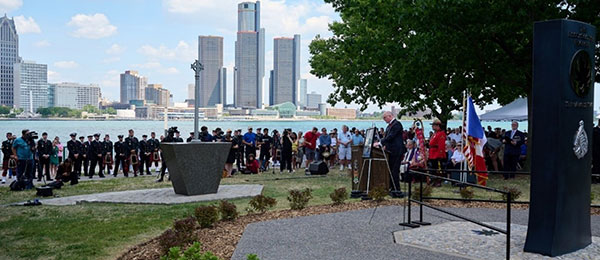
- Establishing a wreath-laying program at the Canadian National War Memorial in Ottawa and the Canadian National Vimy Memorial in France to mark anniversaries and milestones of Canada’s military history from traditional battles to more recent military efforts. We will explore opportunities to partner with the CAF Sentry Program and the Canadian Student Guide Program on wreath placement.
- Continuing to mark important First World War milestones with annual events at related memorials in Europe, wreath-layings at the Canadian National War Memorial in Ottawa, and support for partner and stakeholder initiatives at home and abroad.
- Planning for future commemoration of Second World War and the Korean War milestones at home. We will work with Allied countries to determine the way forward for the current five-year anniversary commemoration cycle. This includes the Ministry of Patriots and Veterans Affairs Revisit Korea Program to determine the best options for supporting Veterans attending international ceremonies.
- Consulting and working with Canadian and international partners to align and coordinate commemorative events and initiatives.
- Developing plans to recognize the death of the last known living Veterans of the Second World War and of the Korean War.
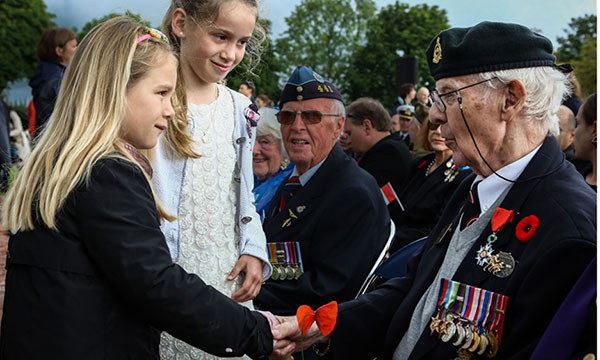
- Identifying ways to involve more youth in commemorative ceremonies in communities across Canada and abroad, whether in person or virtually.
- Supporting the Invictus Games 2025 Vancouver-Whistler, an international sporting competition for ill and injured active-duty members or Veterans. The mission of the Games is to honour people who have sacrificed for their country, using the power of rehabilitative sports to help them on their journey of recovery. For the Invictus Games 2025, one of VAC’s primary partners is Soldier On, a program of the CAF, which leads and manages the Team Canada and Canadian Friends and Family program at the Invictus Games. Approximately 550 competitors from up to 25 nations will be invited to participate in the Games. The 2025 Invictus Games will provide Canada with an exceptional opportunity to highlight the stories of modern Veterans, and still-serving members, including those who have traditionally been underrepresented.
Did you know?
- The first Invictus Games were held in 2014.
- Governments of Canada and British Columbia committed $15 million each, to support the Invictus Games 2025.
- An additional $1 million will be provided to the Soldier On program to support Canadian Veteran participation in the Games from the Government of Canada.
- The Invictus Games 2025 sport program will include five summer adaptive sports and, for the first time, will also include four winter adaptive sports which will expand the range and profile of winter adaptive sports.
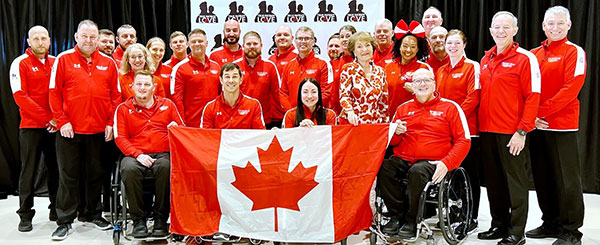
Goal 3. Preserve, maintain and enhance Government of Canada memorials, including the Books of Remembrance and Veteran grave markers, in a sustainable and dignified way.
Our responsibilities include 15 overseas memorial sites, two Departmental cemeteries in Canada, the Books of Remembrance and artifacts and collection pieces used for commemorative and interpretive purposes. Many of these resources have heritage value due to their historical or cultural significance.
Objective 3.1 – Overseas memorials and sites. Maintain, preserve and present the Government of Canada’s international monuments, memorials and battlefields in accordance with our commemorative integrity statements so they may be enjoyed in perpetuity. We will:
- Implement resource management plans governing the operation and maintenance of overseas memorial sites to ensure their long-term sustainability and dignity. Doing so will require indexed operating funding that keeps pace with increased costs in horticulture, maintenance, utility rates and professional services.
- Develop asset management work plans to identify priority projects and large infrastructure investment needs at memorial sites. Actions may include the refurbishment or repurposing of existing buildings, electrical, water or sewage repairs and upgrades, accessibility enhancements and redesign of visitor experience elements such as traffic flow at the Canadian National Vimy Memorial.
- Develop and implement a forest management plan at the Canadian National Vimy Memorial and the Beaumont-Hamel Newfoundland Memorial. These memorial sites have mature forests with trees averaging 85 years of age that are dying off at a rate of 2-3% per year. To manage and maintain them, we will seek advice from local authorities and other stakeholders on the necessary forest removal, regrowth strategies, cut patterns and demining requirements.
- Leverage and enhance the Canadian Student Guide Program in France by increasing the profile of the 45+ Canadian students hired annually to provide interpretive services at our memorial sites in Europe. This may include development of new narratives to support guided visits, exchanges with other organizations offering similar programming, outreach to universities in Canada to promote offerings, outreach to schools in Canada to promote recruitment and increased participation in commemorative events and activities in the region.
- Develop a visitor experience strategy for our interpretive spaces and memorial sites. Activities may include improving online resources to attract and assist visitors planning trips to overseas memorials, developing a mobile application for self-guided visits, investing in permanent and temporary exhibits and installing interpretive panels that highlight the diversity of those who served at our memorial sites.
- Work with other Government of Canada partners to identify and implement approaches and best practices to help maintain, present and interpret Canada’s overseas memorials.
Did you know?
- The Government of Canada will invest $11.7M over six years and almost $300K annually to maintain, modernize and enhance visitors’ experience at Canada’s 15 overseas memorial sites.
- VAC launched a project to plant 70,000 trees at the Canadian National Vimy Memorial and the Beaumont-Hamel Newfoundland Memorial in France as part of a 10-year forest conservation project to rejuvenate the forests.
- Canada is a member nation of the Commonwealth War Graves Commission (CWGC). On behalf of Member Nations, including that of Canada, the CWGC cares for the graves of 110,355 Canadian First and Second World War dead in cemeteries around the world, as well as more than 210,000 Veteran grave markers in Canada and overseas.
- As part of our commitment to sustainability and preservation, VAC utilizes more than 500 sheep to keep the grass short on First World War battlefields at Vimy and Beaumont-Hamel.
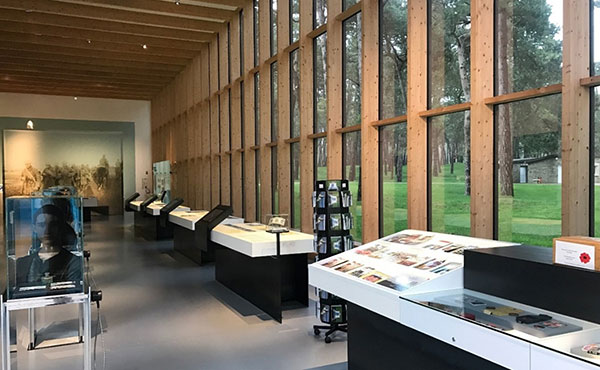
Objective 3.2 – In-Canada monuments, memorials and awards. Develop and enhance interpretation of Government of Canada national military memorials and other monuments in Canada. This includes:
- Working with our partners to complete the construction and unveiling of the National Monument to Canada’s Mission in Afghanistan.
- Advocating for a Government of Canada project to update the National Peacekeeping Monument and enhance the interpretation of the monument and site (design, symbology and purpose of the monument, the ‘Mission Wall” and purpose of the Canadian Peacekeeping Service Medal), so that all those who served on peacekeeping missions feel that they are represented and honoured at the site.
- Working with our partners to explore opportunities to enhance interpretation at the National War Memorial site (design, symbology and original purpose of the memorial, the rededications and the Tomb of the Unknown Soldier) so that all those who served feel that they are represented and honoured at the site.
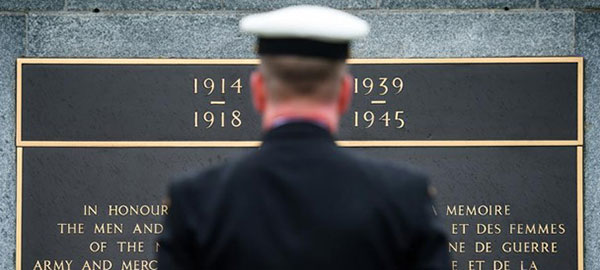
Objective 3.3 – Commemoration programs. Respond to requests for increased Commemorative Partnership Program support for third party community engagement, war memorial restoration and construction initiatives and ensure the maintenance and preservation of Veteran graves in Canada. We will:
- Streamline and simplify the Funeral and Burial Program.
- Eliminate the backlog of Veteran grave maintenance repairs.
- Review the Cemetery and Grave Marker Maintenance program to ensure it can keep up with the demand for grave marker repair and replacement. This includes reviewing the inspection cycle and identifying the human and financial resources required to support the program.
- Work with owners/stewards of cemeteries to ensure the long-term monitoring and maintenance/repair of fields of honour in Canada.
- Work with the Department of National Defence to streamline delivery of the Memorial Cross program.
- Develop a plan to discontinue issuing military medals and decorations for the Veterans of the Second World War and Korean War.
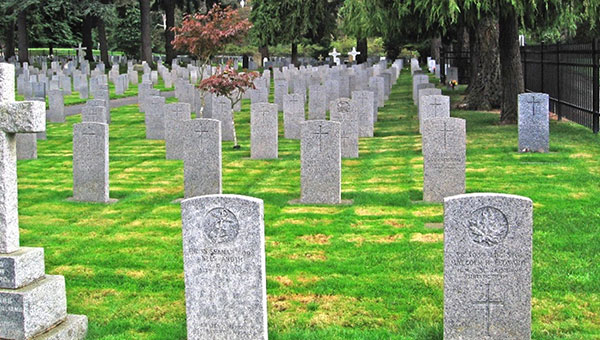
Goal 4. Align Departmental resources to better serve Canadians.
We will align and clarify roles and responsibilities to use our valuable human resources to best effect. We will ensure that our employees have training and tools to do their job to deliver our commemorative programming. We will provide the necessary resources to meet the modern needs of the Department and those we serve.
Objective 4.1 – Support for employees. Clarify roles, responsibilities and accountabilities to better support Commemoration Division and other internal partners within VAC. This includes:
- Aligning Commemoration Division and Communications Division efforts and planning to better clarify roles and responsibilities to best support the Department’s commemorative mandate.
- Identifying inter-departmental supports required (policy, information technology, procurement and real property) to ensure Commemoration Division receives the same supports provided to other areas within the Department.
- Reviewing Commemoration Division’s organizational structure to best align our skills and resources for delivery of current and future commitments.
- Supporting public-facing employees to represent the Department at commemorative events to help them become ambassadors of commemoration.
- Implementing a professional development program for employees to increase knowledge of Canada’s military history and actions post-Korean War.
Objective 4.2 – Commemoration Division operational plan and future forecasting. Develop and implement an operational plan that clearly identifies the resources and technical tools/enhancements required to support the delivery of initiatives within the Commemoration Strategic Plan or vision. The plan will include International Operations requirements for conservation and visitor experience. This includes:
- Developing and implementing a three-year operational plan, with a two-year forecast, that identifies priorities, action items and provides the technical capability to better manage and deliver projects and initiatives.
- Seeking stable, long-term funding to efficiently plan and implement day-to-day work to deliver the Canada Remembers Program and the Funeral and Burial Program through carefully considered budget submissions.
Moving forward
Our principles guide and inform our “CAF Around the World” regional approach to understand the experiences, sacrifices and contributions of all who served. We will help the members of our country’s diverse population understand the contributions of all those who served in the cause of bringing peace and security to different regions of the world, including here at home. Canadians’ recognition of Veterans’ service and sacrifice, and of those who died in service will contribute positively to the well-being of today’s Veterans and their families.
It is important to know if we are accomplishing this. We will measure our success in this plan through consultations with stakeholders to determine if we are meeting their expectations. The Departmental Audit and Evaluation Division will evaluate how effectively we have achieved our objectives.
Veterans want Canadians to remember the efforts and sacrifices they and their predecessors have made. They want Canadians to recognize and proudly display the values for which they fought. We will be stewards of remembrance and recognition on their behalf and on behalf of those we have lost.
Lest we forget.
